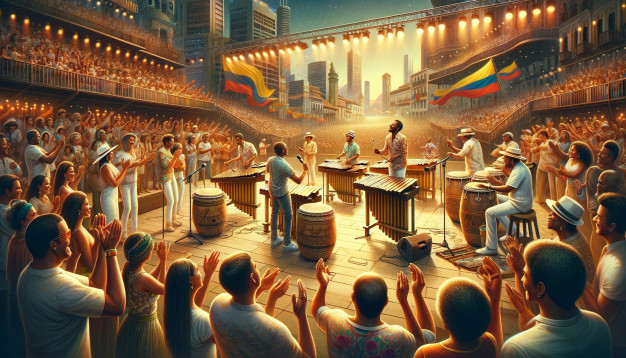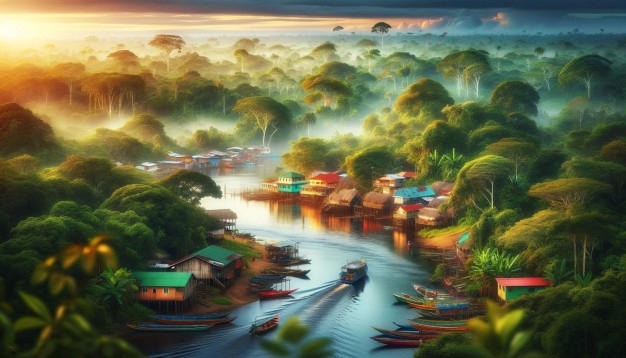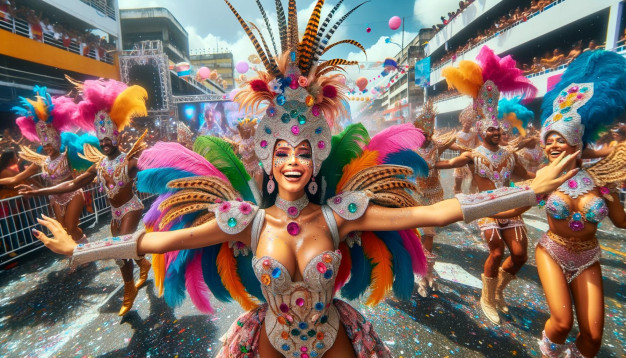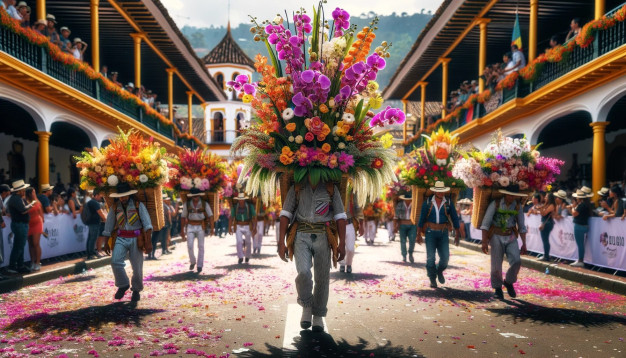Music a Dances in Colombia
Explore the vibrant rhythms and moves of Colombia's rich musical and dance heritage.

The Cultural Mosaic of Colombia
Colombia, a land of vibrant rhythms and colorful dances, is a cultural tapestry woven with threads from its indigenous, Spanish, and African roots. This fusion creates a rich and diverse musical heritage, making the country a pulsating hub for melody aficionados and dance enthusiasts alike.
Importance of Music and Dance in Colombian Identity
In Colombia, hips don’t lie and neither do the beats. Music and dance are not mere pastimes, but the lifeblood of Colombian identity and social cohesion. From courtship to protest, and from celebration to mourning, these art forms are the soundtrack to every aspect of life.
Historical Roots of Colombian Music and Dance
Pre-Colombian Traditions
Before the arrival of the conquistadors, Colombia’s indigenous people were crafting flutes from bones and drums from animal skins. These instruments were not just musical toys; they were the iPhones of their day, essential for communication with the divine.
Spanish, African, and Indigenous Fusions
When Spain brought its guitars and violins, they didn’t expect to be upstaged by African drums and indigenous flutes. But merge they did, creating a sound as fiery as a jalapeño in a salsa dance-off.
Regional Variations in Colombian Music
Andean Region Sounds
The Andean region hits the high notes with the tiple and cuatro, stringed instruments that can pluck at your heartstrings with their melancholic tunes.
Caribbean Coast Rhythms
The Caribbean coast is where the party’s at, with cumbia and vallenato beating the drums of a musical revolution, turning every street into a dance floor.
Pacific Coast Beats
The Pacific coast’s beats are as deep and mysterious as the ocean itself. The marimba and currulao rhythms will have you swaying like a palm tree in a tropical breeze.

Eastern Plains Harmony
The Eastern plains offer a harmony as vast as the horizon, where the harp and cuatro serenade the cattle and cowboys alike.
Amazonian Influences
Deep in the Amazon, the music is more than a melody; it’s a mythical whisper from the jungle, an enchanting blend of nature’s own soundscape.

Iconic Colombian Dance Styles
Cumbia
Cumbia brings the heat with its flirtatious moves and twirling skirts, a dance that tells a story of love and courtship.
Vallenato
Vallenato is the soulful serenade of the accordion, a soundtrack to the soap opera of Colombian life.
Salsa
Colombia’s salsa is spicier than the local ajiaco soup, with Cali claiming the throne as the world’s salsa dancing capital.
Mapalé
Mapalé is the frenetic dance of the Afro-Colombian fisherman, a high-energy spectacle that’s cardio workout and cultural expression rolled into one.
Bambuco
Bambuco is the waltz’s distant, cooler cousin, a dance of grace and courtship that echoes the Andean mountains.
Joropo
Joropo is the wild horse of dances, a fast-paced romp that’s as much a test of endurance as it is a celebration of plains culture.
Traditional Instruments in Colombian Music
Stringed Marvels: Tiple and Bandola
The tiple and bandola are the unsung heroes of Colombian strings, often overshadowed by the flashy guitar but never outdone in their melodious charm.
Percussion Essentials: Tambora and Caja
Tambora and caja are the backbone of Colombian rhythm, the drum duo that could start a party in a monastery.
Wind Delights: Gaita and Flauta de Millo
The gaita and flauta de millo are the pied pipers of Colombia, leading a mesmerizing dance with their enchanting tunes.
Modern Moves and Contemporary Music
Champeta
Champeta is the rebellious teenager of Colombian music genres, borrowing from African beats to create a sound as infectious as a viral meme.
Reggaeton Influence
Reggaeton may have roots elsewhere, but Colombia has embraced it with gusto, giving it a twist as unexpected as a plot twist in a telenovela.
Popular Pop and Rock Acts
Even Colombia’s pop and rock have a little sazón, infusing global trends with local spice to produce hits that cross borders and language barriers.
Festivals Celebrating Music and Dance in Colombia
Carnival of Barranquilla
The Carnival of Barranquilla is not just a party; it’s an all-out cultural brawl, where every dance style and musical genre competes for your attention.

Vallenato Legend Festival
The Vallenato Legend Festival is the stuff of accordion dreams, a place where squeezing a box can make you a superstar.
Flower Festival in Medellin
Medellin’s Flower Festival is not just about blooms; it’s a botanical beat-fest with enough salsa and tango to make the flowers dance.

Salsa Festival in Cali
The Salsa Festival in Cali is a whirlwind of spins and sequins, where the only thing hotter than the moves are the salsas at the food stands.

Dance and Music Education in Colombia
Formal Schools and Academies
Colombia’s music and dance schools are as serious about their art as a judge on a reality TV talent show, molding the next generation of performers with precision and passion.
Community Workshops and Street Performances
Through community workshops and street performances, Colombians pass down their rhythmic heritage as casually as sharing a recipe for the perfect arepa.
The Global Impact of Colombian Music and Dance
International Recognition
Colombian grooves have gone global, earning Grammys and filling dance floors from Tokyo to Timbuktu.
Colombian Artists on the World Stage
The likes of Shakira, Juanes, and J Balvin are not just pop stars; they are musical ambassadors, spreading the Colombian vibe like a contagious rhythm ready to take over the world.
Preserving Cultural Heritage Through Music and Dance
Colombia’s commitment to its musical roots is as steadfast as its coffee plants, ensuring that its cultural heritage will continue to flourish and inspire globally.